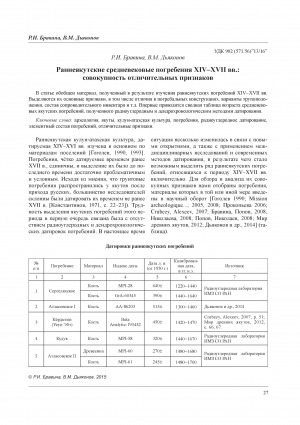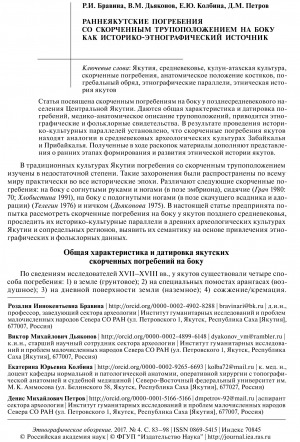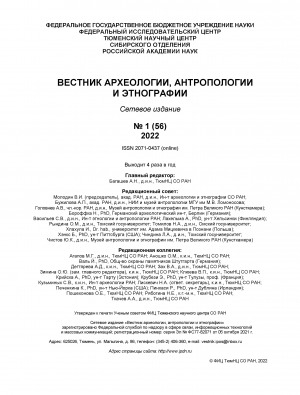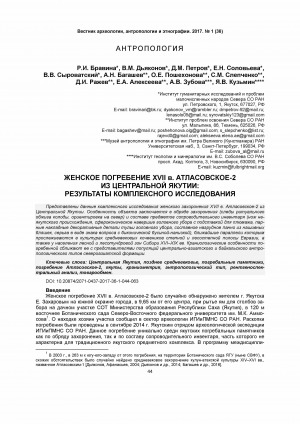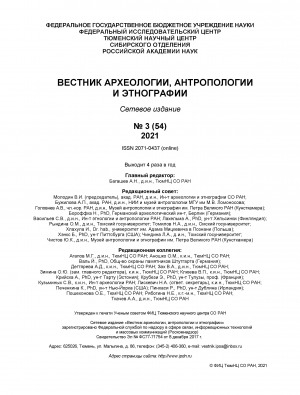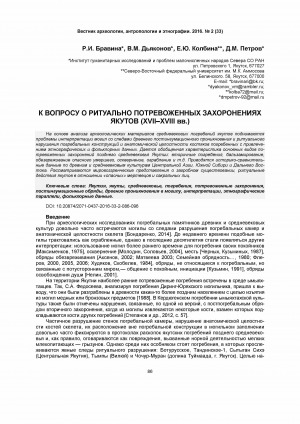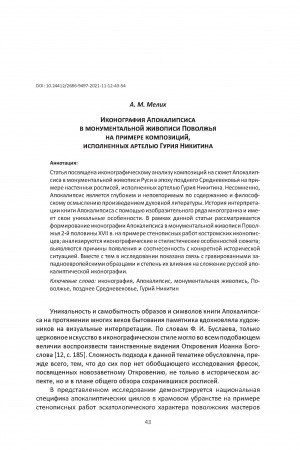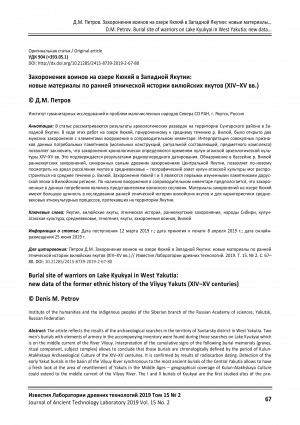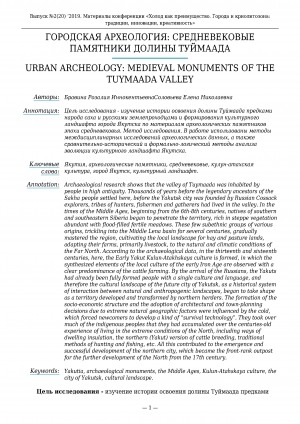QR-код документа
Как сканировать QR-код?
Для пользователей Android:- Скачайте приложение для сканирования QR-кодов (Google Play)
- Откройте скачанное приложение;
- Наведите камеру на QR-код.
- Откройте приложение "Камера";
- Наведите камеру на QR-код;
- Нажмите на всплывающее уведомление.
Другие выпуски
Номера года:
Вам будет интересно
Раннеякутские средневековые погребения XIV-XVII вв.: совокупность отличительных признаков Early Yakut medieval burials of XIV-XVII centuries: distinctive features Раннеякутские погребения со скорченным трупоположением на боку как историко-этнографический источник Early Yakut Burials in the Flexed Position as a Historical and Ethnographic Source Погребение огонек на средней Лене — новый памятник белькачинской культуры The burial Ogonyok in the middle Lena River region: a new site of the Bel'kachi Culture Женское погребение XVII в. Атласовское-2 из центральной Якутии: результаты комплексного исследования Береста в погребальном обряде якутов: по материалам погребения Учугей Юрях (XV–XVII вв.) Birch bark in the funeral rite of the Yakuts: a case-study of the Uchugei-Yuryakh burial (15th–17th cc.) К вопросу о ритуально потревоженных захоронениях якутов (XVII–ХVIII вв.) Иконография Апокалипсиса в монументальной живописи Поволжья на примере композиций, исполненных артелью Гурия Никитина Iconography of the Apocalypse in the Monumental Painting of the Volga Region on the Example of Compositions Performed by Guriy Nikitin’s Artel Позднесредневековые захоронения Якутии XIV-XVI вв. как археологический источник Захоронения воинов на озере Кюкяй в Западной Якутии: новые материалы по ранней этнической истории вилюйских якутов (XIV–XV вв.) Burial site of warriors on Lake Kyukyai in West Yakutia: new data of the former ethnic history of the Vilyuy Yakuts (XIV–XV centuries) Городская археология: средневековые памятники долины Туймаада Urban archeology: medieval monuments of the Tuymaada valley


